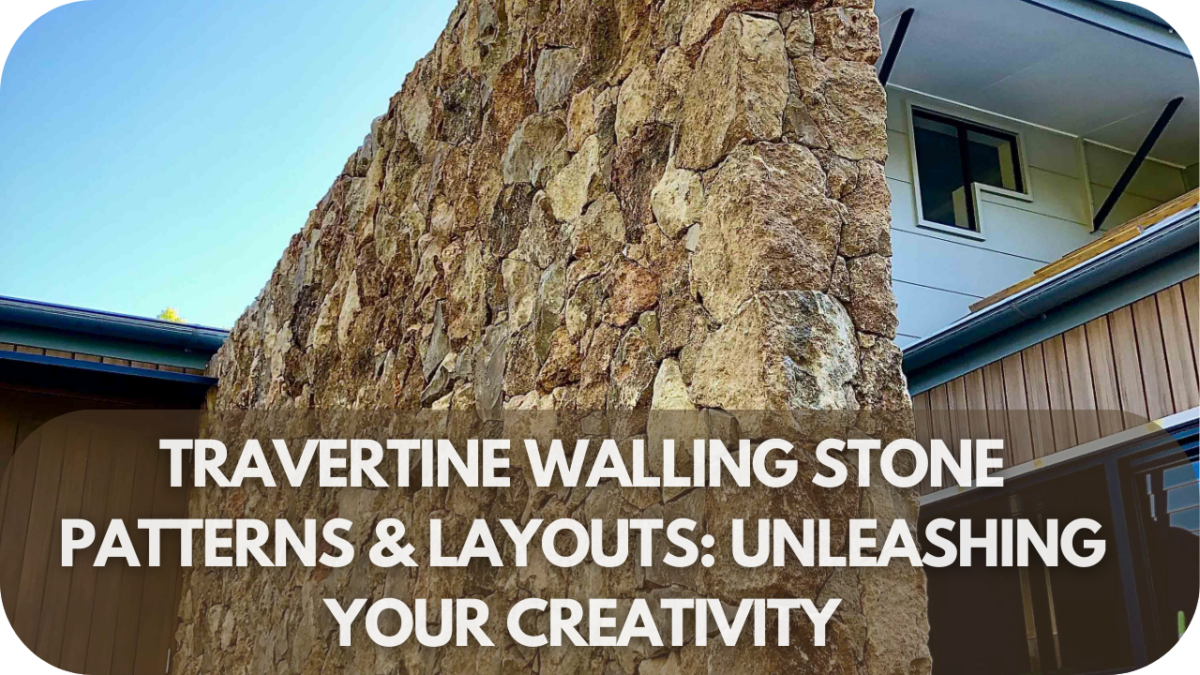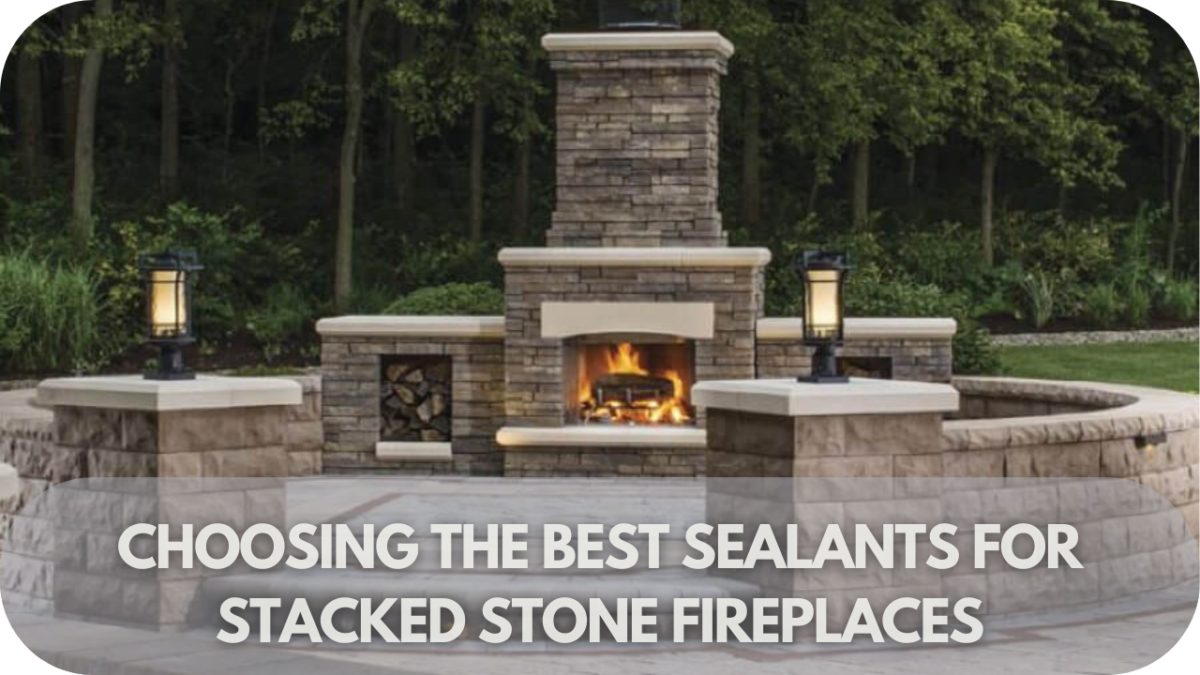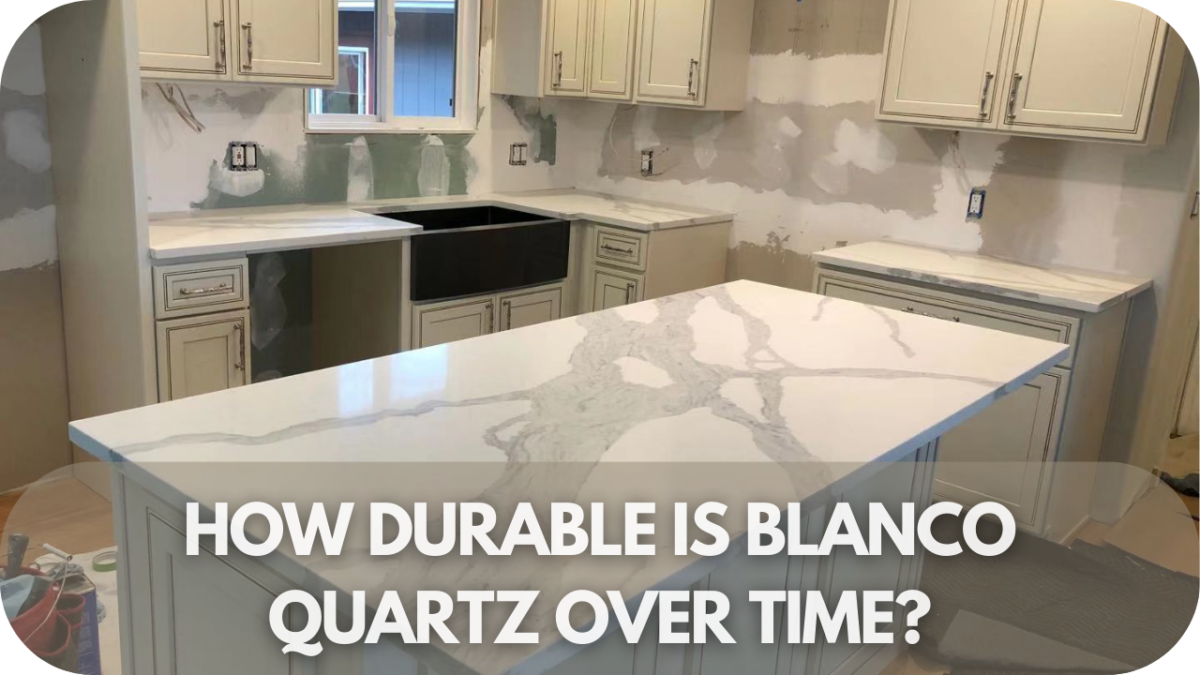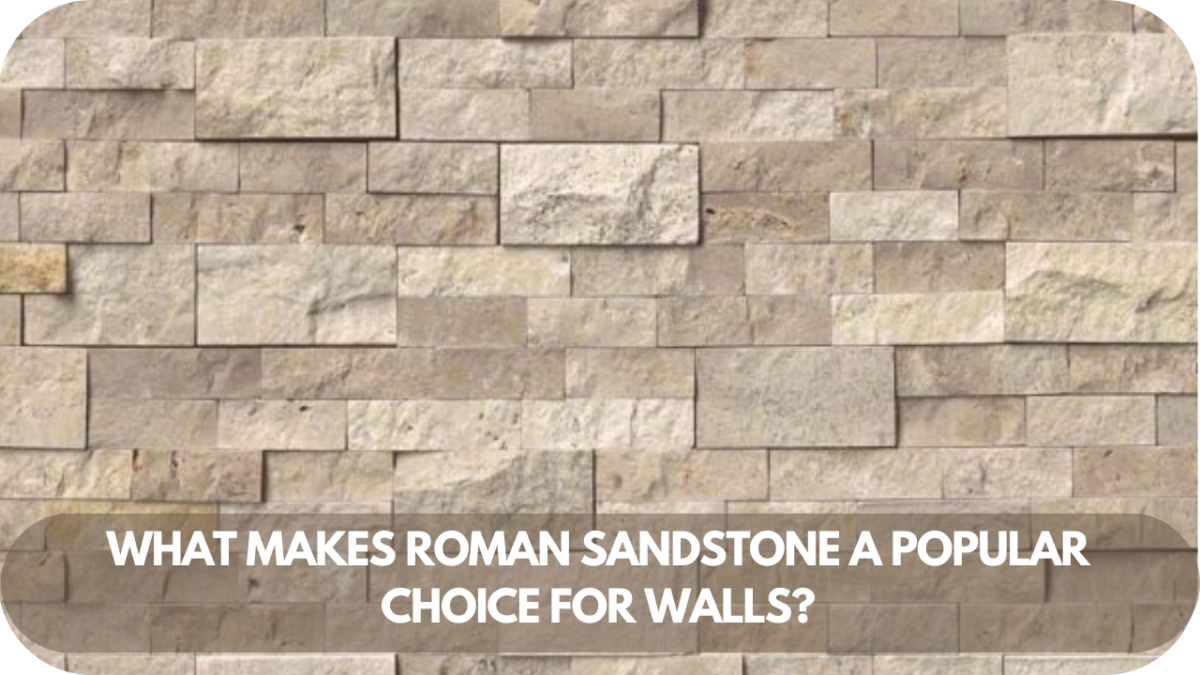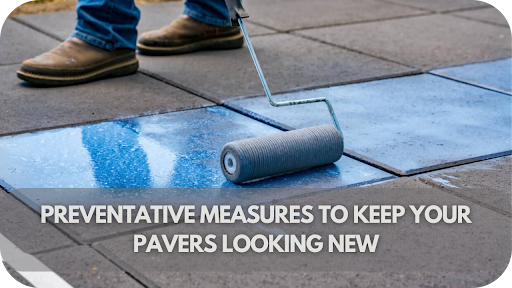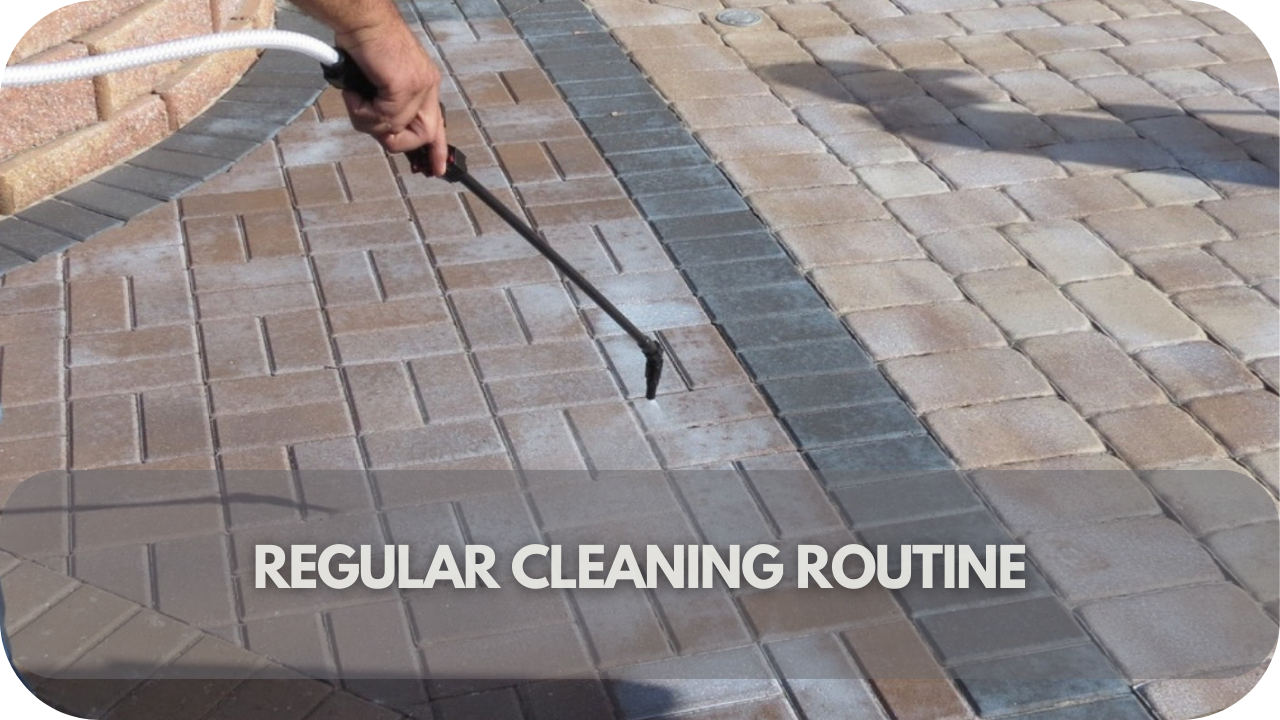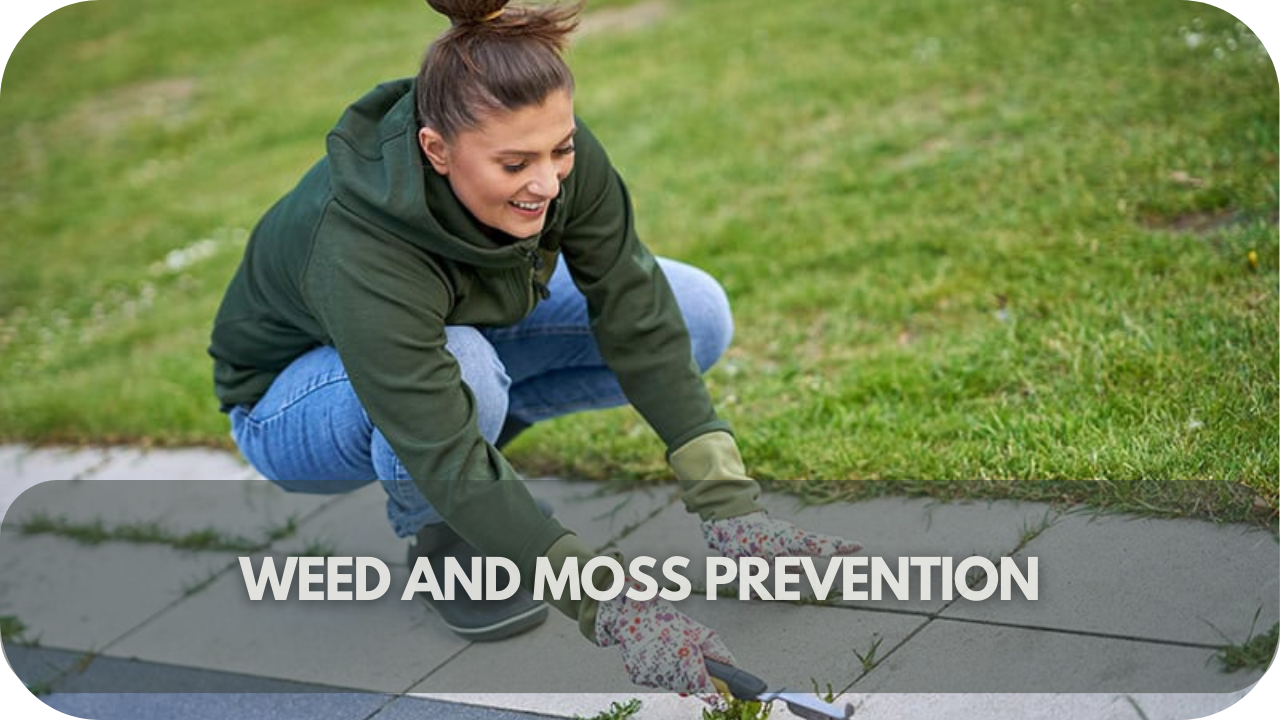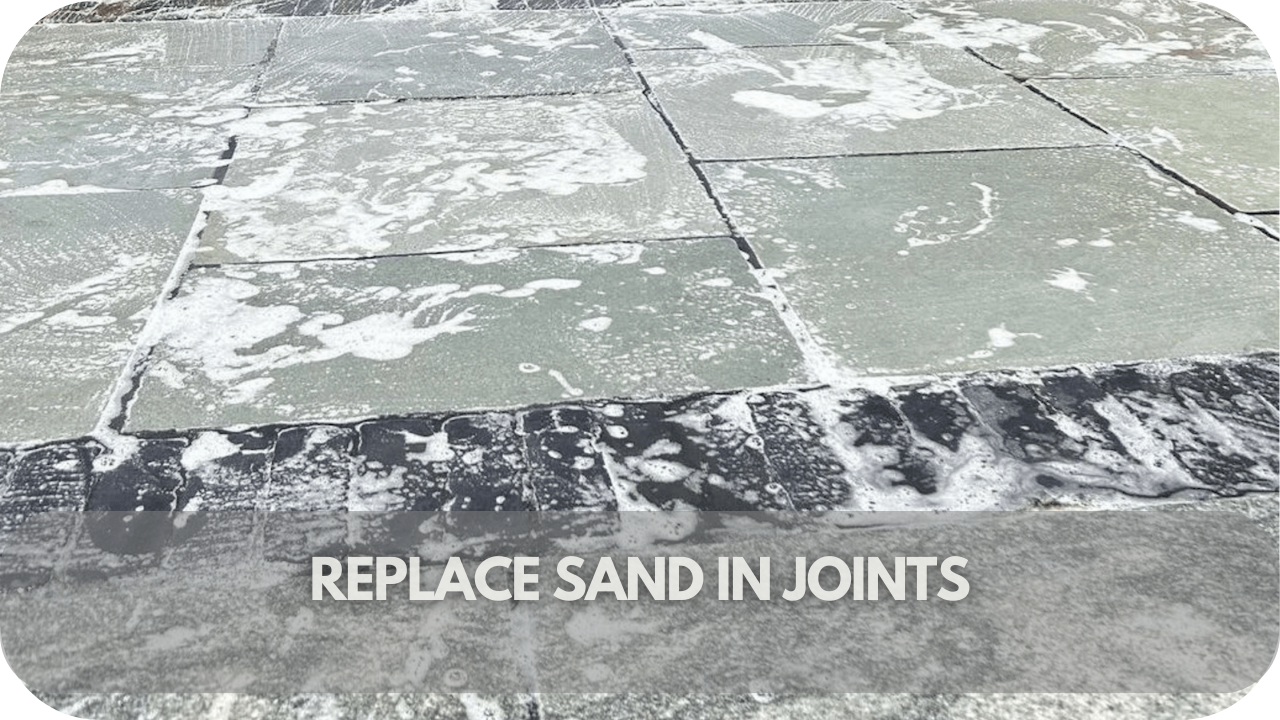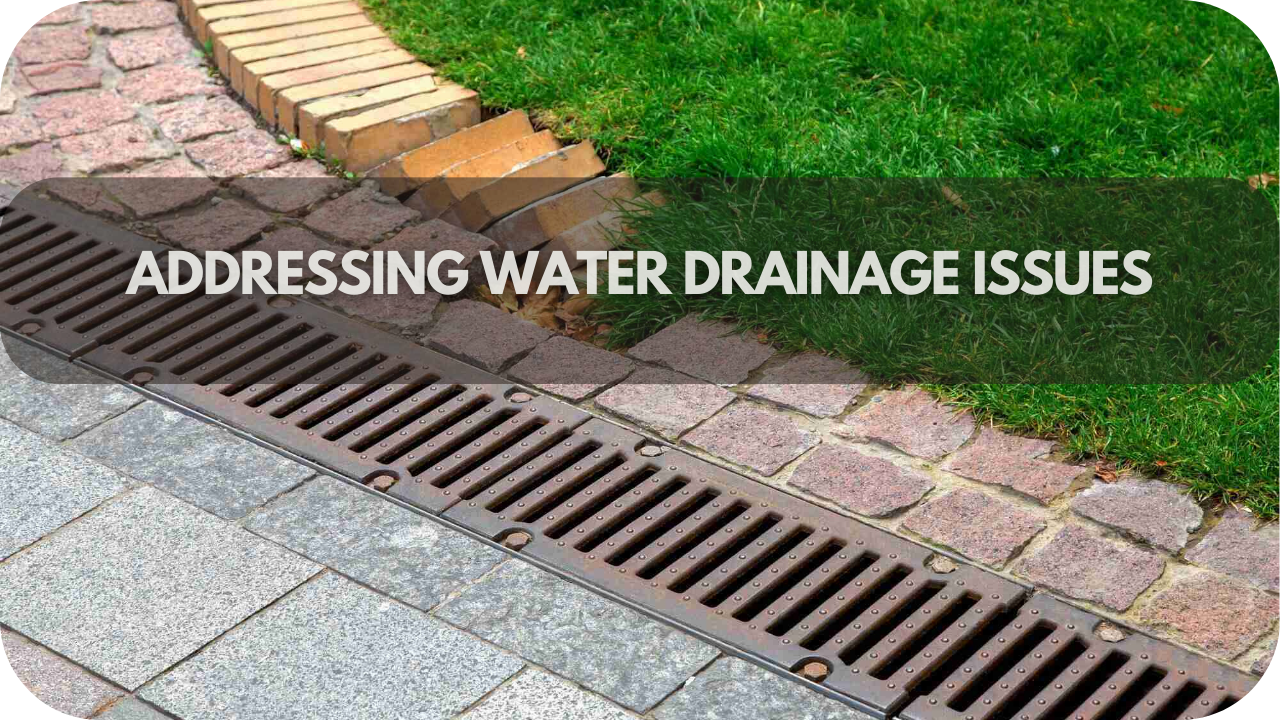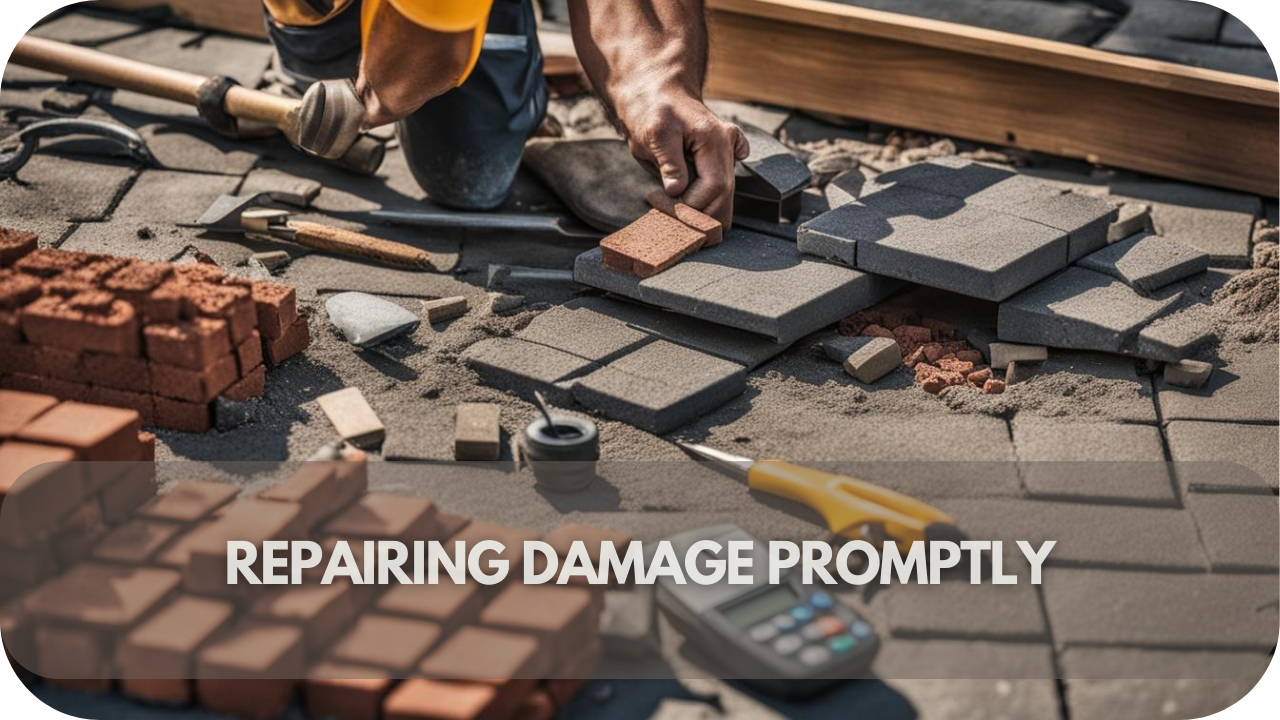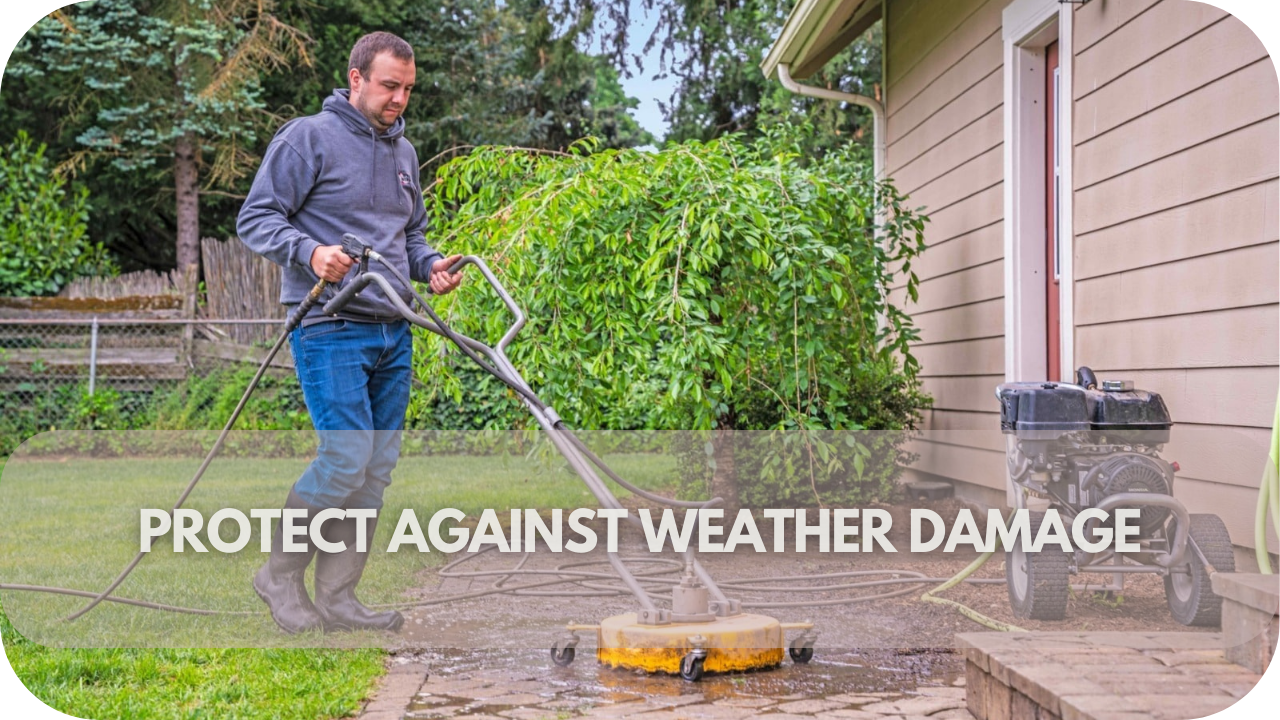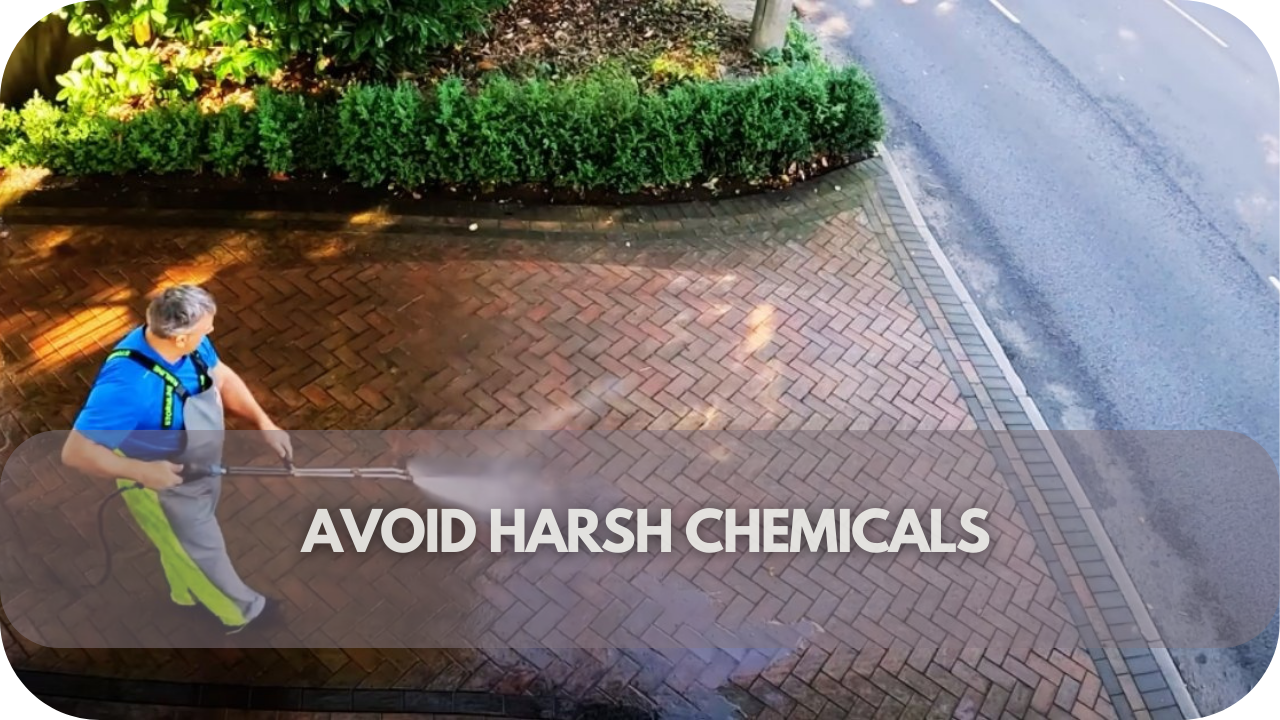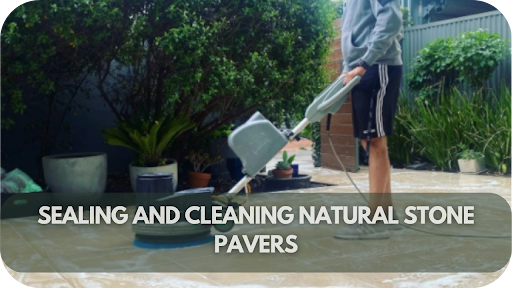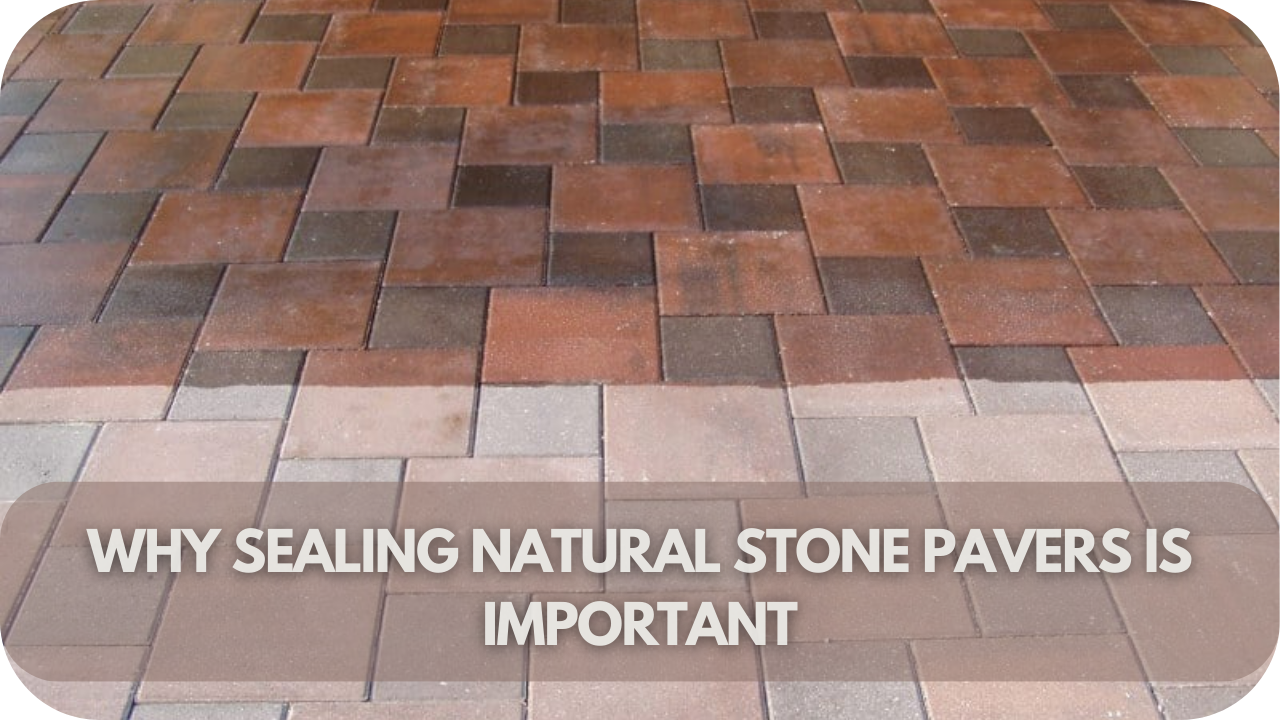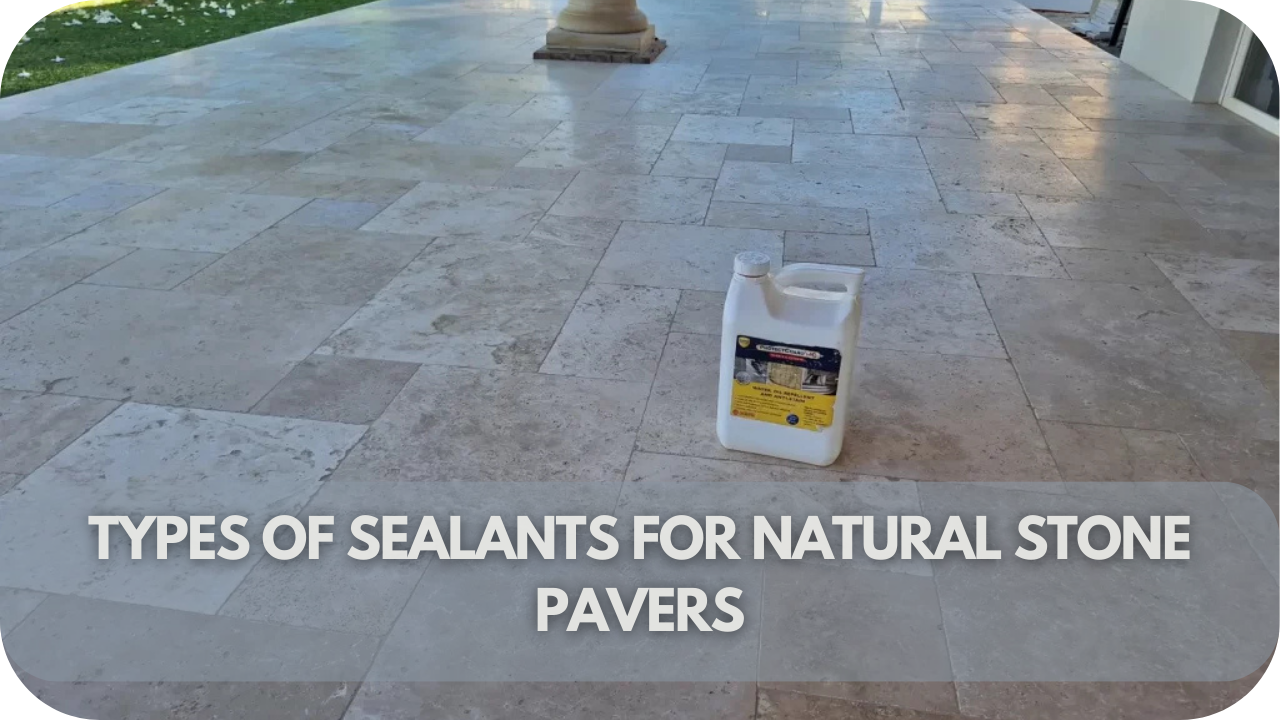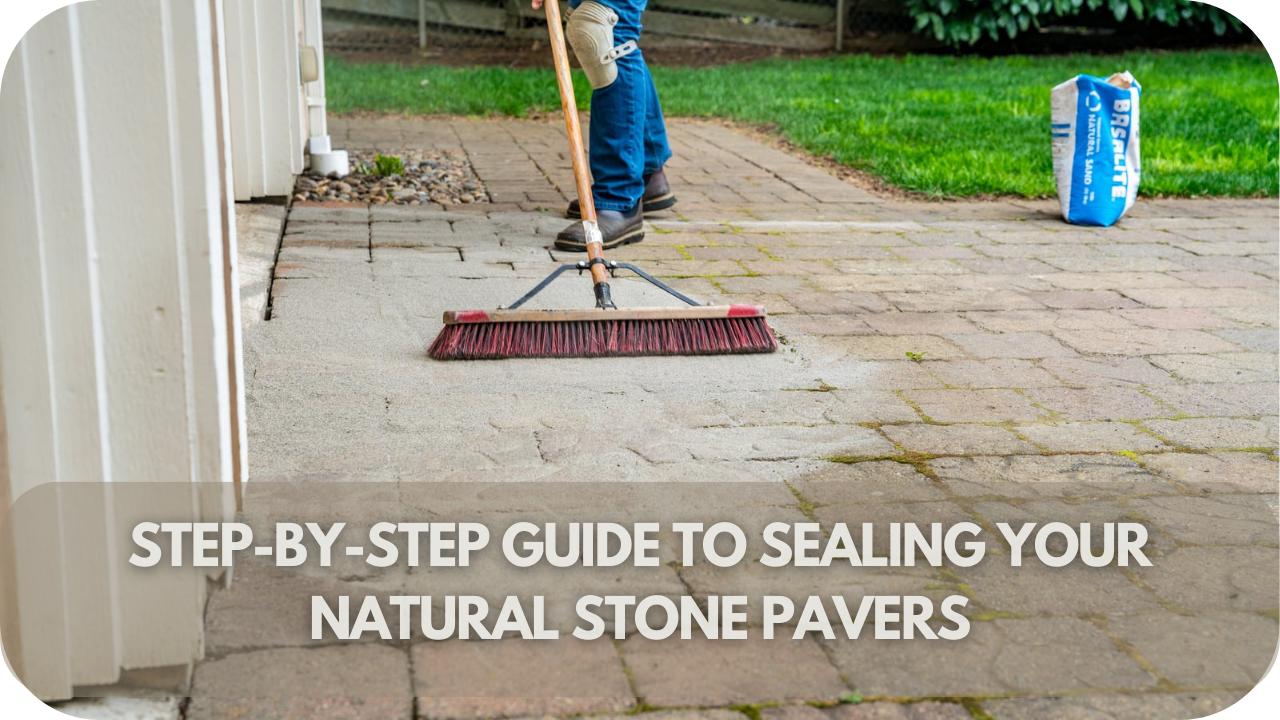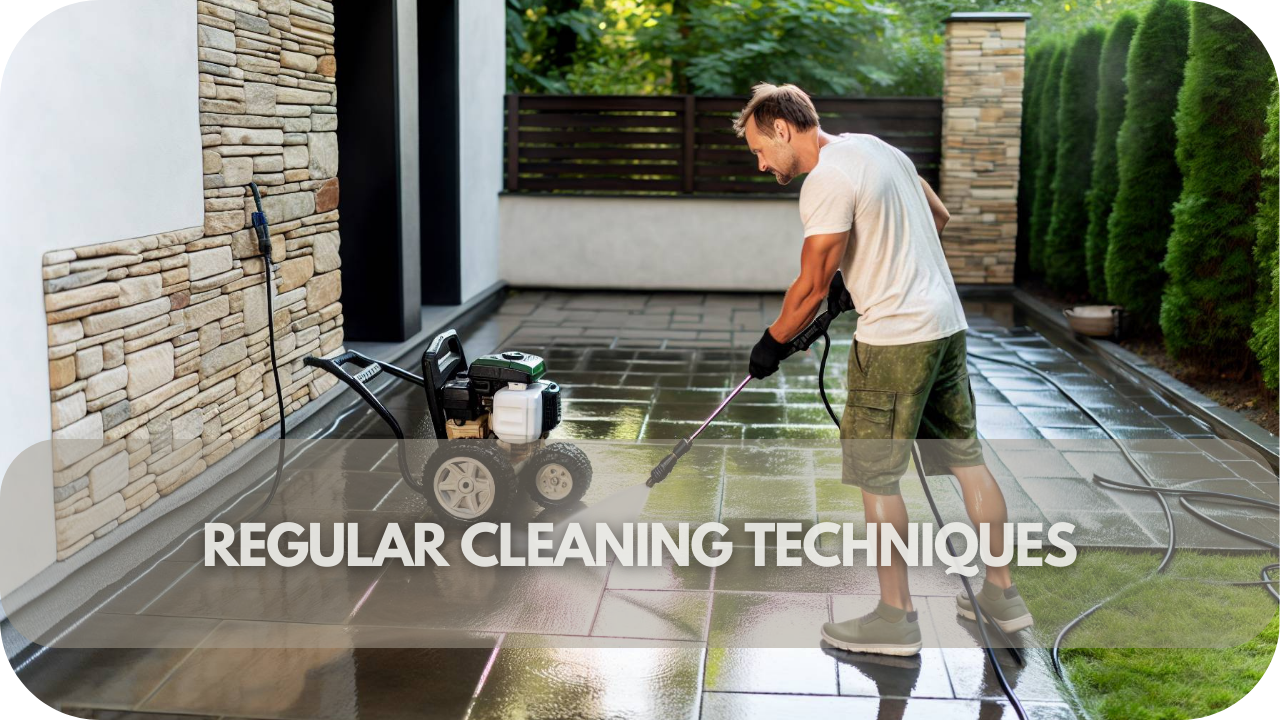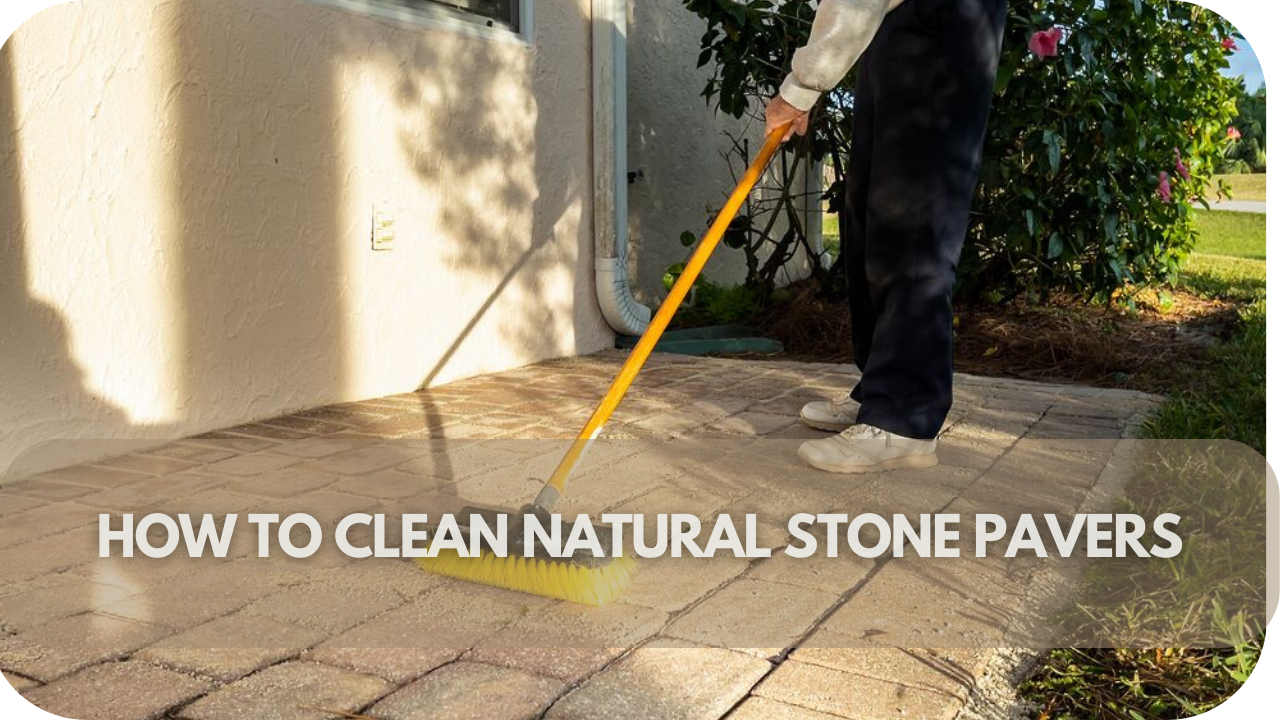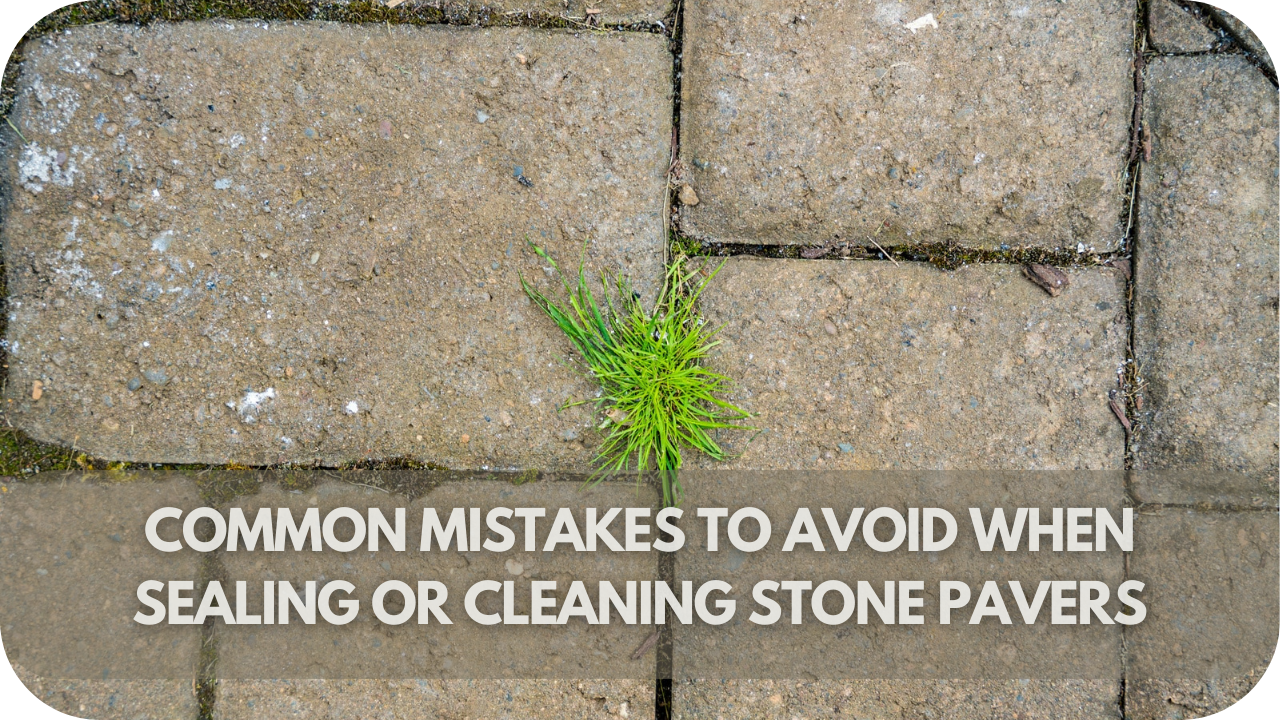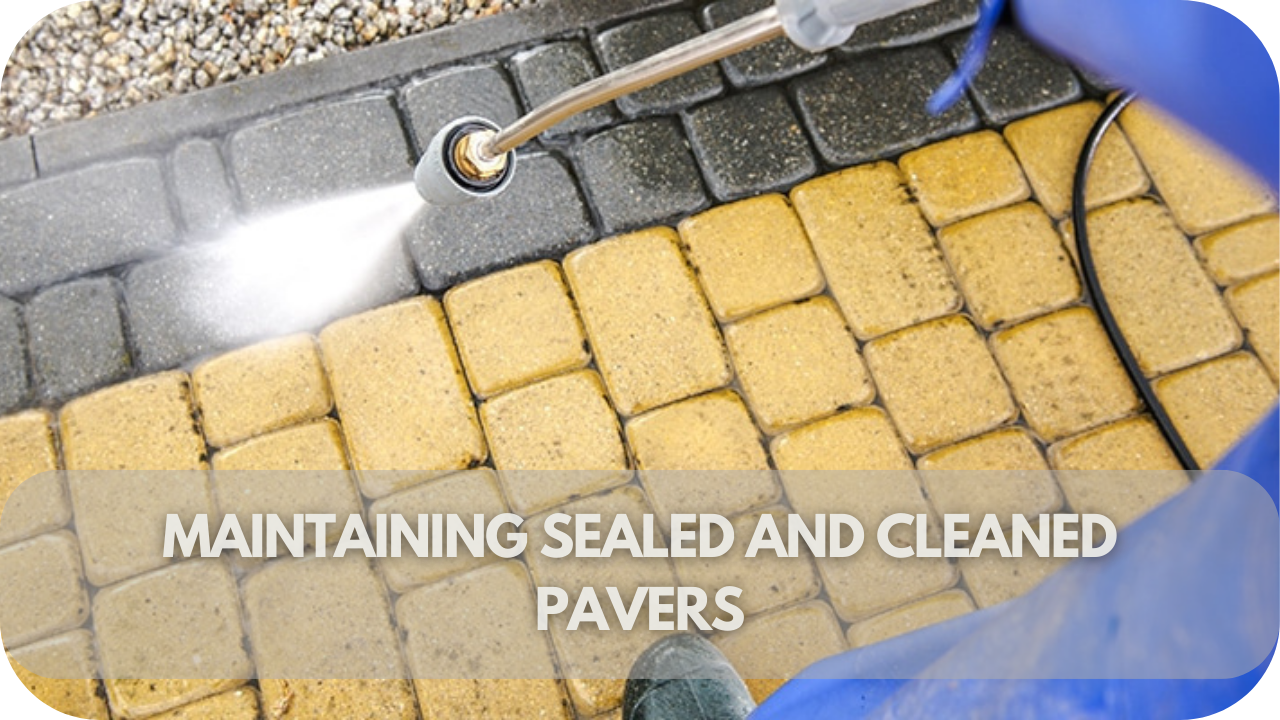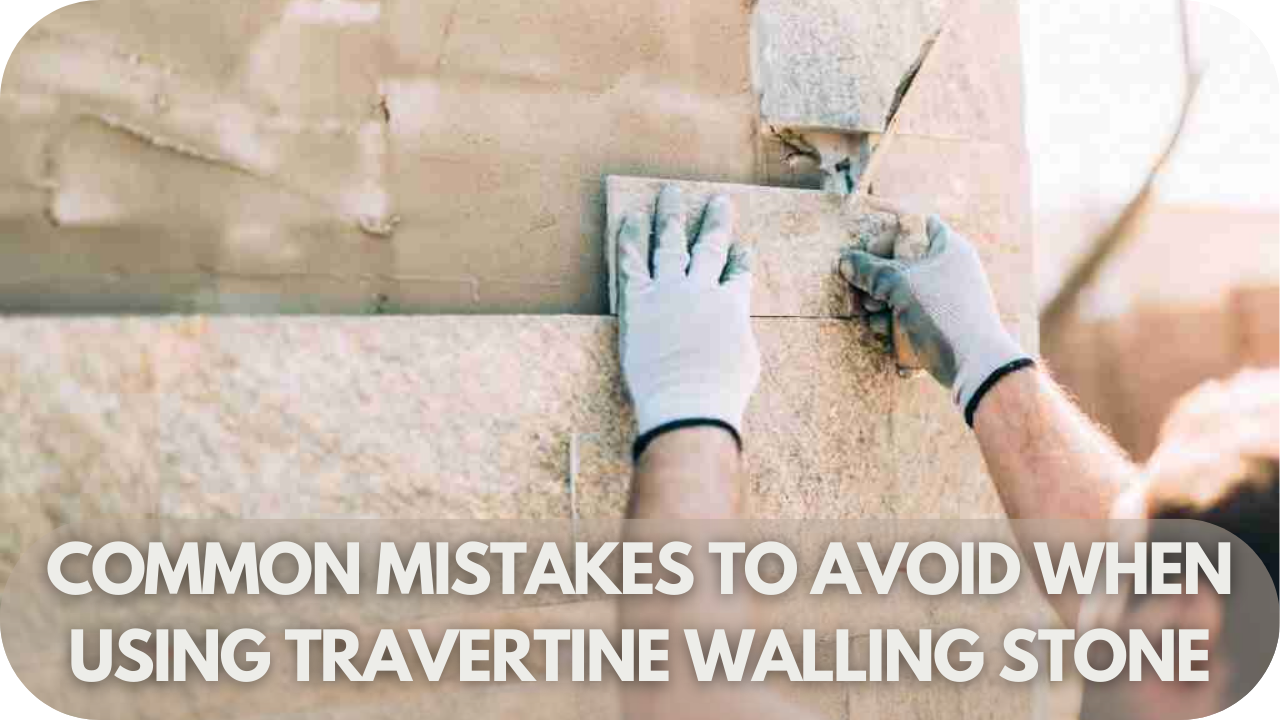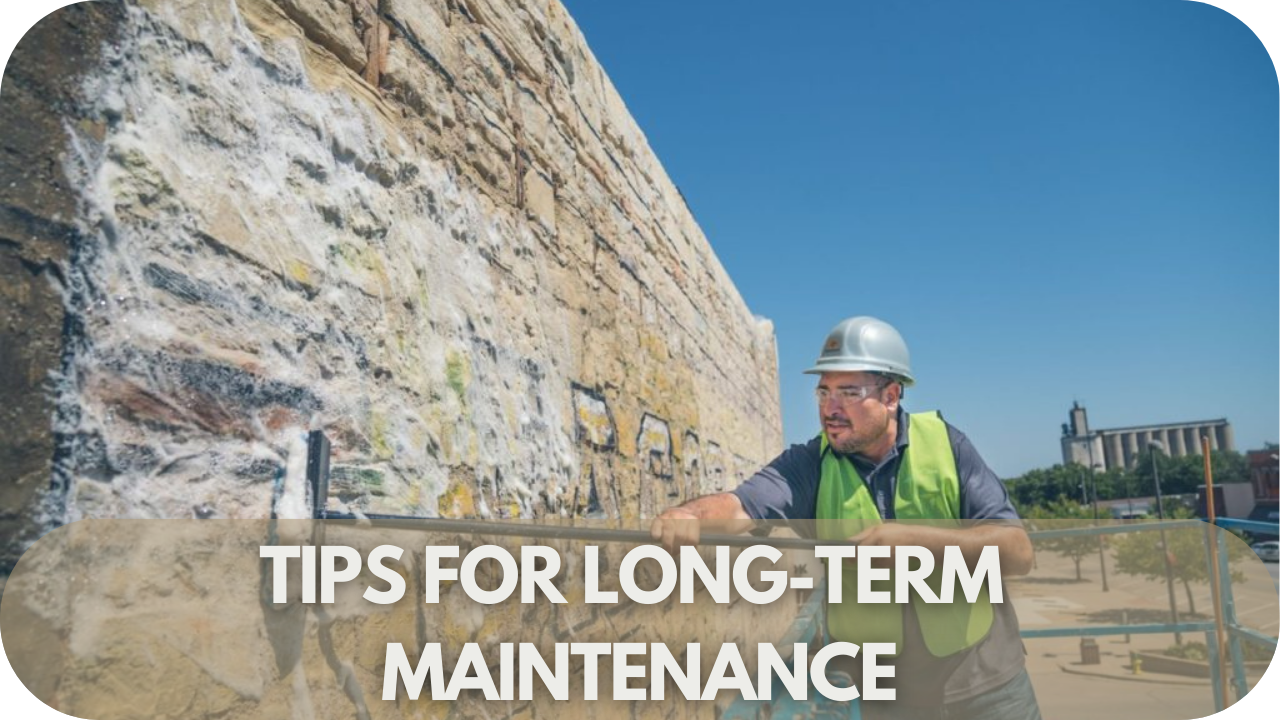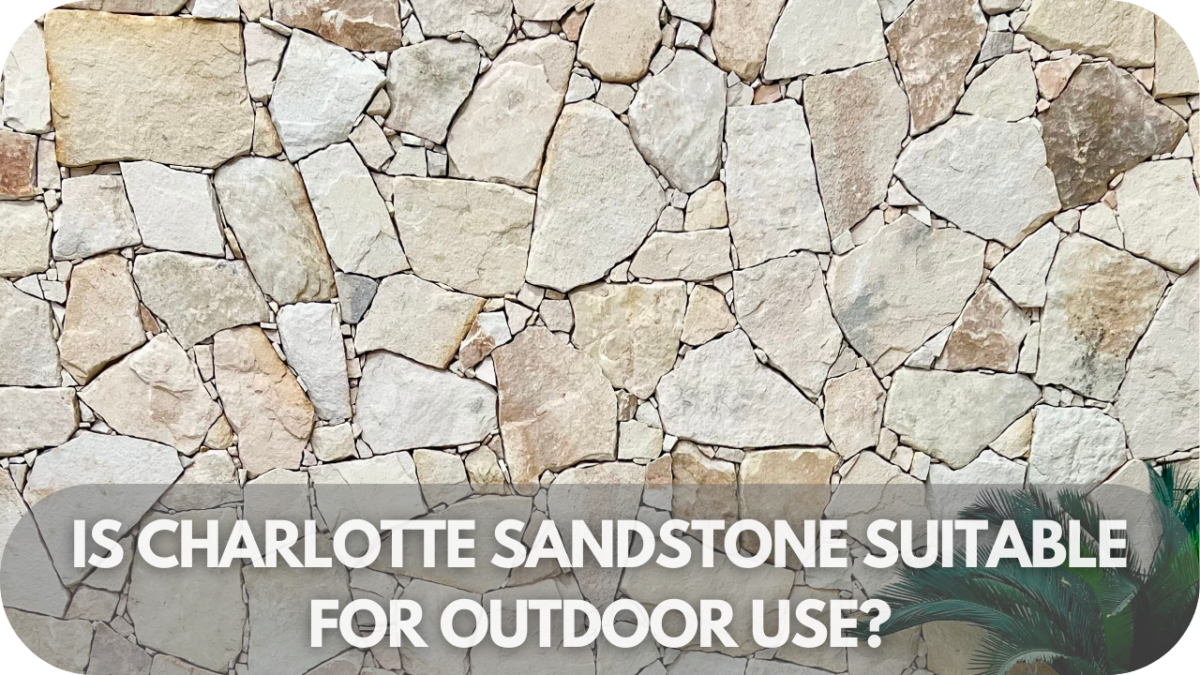Travertine Walling Stone Patterns & Layouts: Unleashing Your Creativity
Travertine walling stones can add a touch of elegance and style to any space, but how do you make the most of them? The key lies in choosing the right patterns and layouts.
With so many options to play with, you can create everything from rustic charm to modern sophistication. Whether you’re working on an indoor feature wall or an outdoor patio, Travertine offers endless possibilities.
In this article, we’ll show you how to get creative and turn your walls into a beautiful masterpiece.
Popular Travertine Walling Patterns
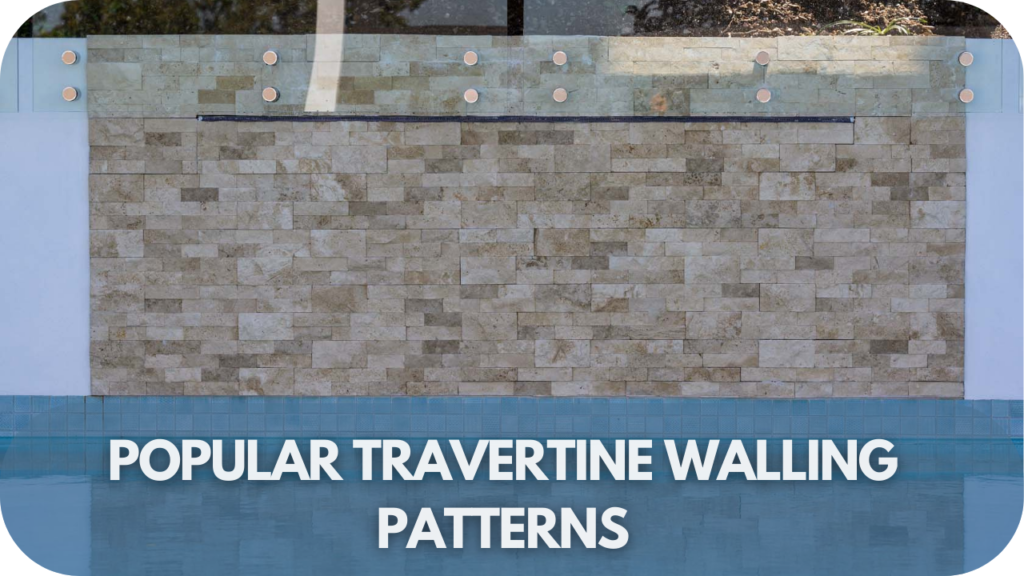
Travertine walling stones offer a range of patterns that can dramatically enhance the aesthetics of your space. Here are some of the most popular patterns:
1. Stacked Bond
The stacked bond pattern is a simple yet striking way to use travertine walling stones. It involves placing the stones directly on top of each other in neat, vertical and horizontal lines. This layout creates a clean, modern aesthetic with a sense of order and symmetry.
Stacked bond works particularly well with rectangular or square travertine tiles and suits spaces where a minimalist style is preferred.
The precise alignment highlights the natural textures and subtle variations in the stone’s colour. Whether used indoors or outdoors, it provides a sleek and timeless finish, making it a favourite for accent walls, fireplaces, and garden features.
However, because the joints run in straight lines, this pattern might rely more on mortar strength, so it’s essential to ensure proper installation for durability.
2. Running Bond (Brick Pattern)
Running bond, often called the brick pattern, is one of the most versatile and timeless layouts for travertine walling.
In this design, stones are laid in rows, with each stone in a row offset by half the length of the stone in the row below it. This creates a staggered effect that is visually appealing and functional, as it adds structural stability.
The pattern’s overlapping joints break up straight lines, giving walls a more natural and relaxed appearance.
Running bond works beautifully in both traditional and contemporary spaces and complements various travertine tones and finishes. It’s particularly effective in emphasising length, making it a great choice for elongating walls or creating the illusion of a larger area.
3. Herringbone
Herringbone is a dynamic and eye-catching pattern that brings energy and movement to travertine walling. It is created by arranging rectangular tiles in a zigzag layout, where each tile is placed at a 45-degree angle to form a V-shaped pattern.
This design works well for creating focal points, such as feature walls or fireplace surrounds. Herringbone highlights the natural veining and colour variations of travertine, adding depth and texture to the surface.
It’s a popular choice for spaces that need a bold statement or a touch of sophistication. While the pattern requires precision during installation, the result is a refined and timeless look that transforms any wall into a work of art.
4. Basket Weave
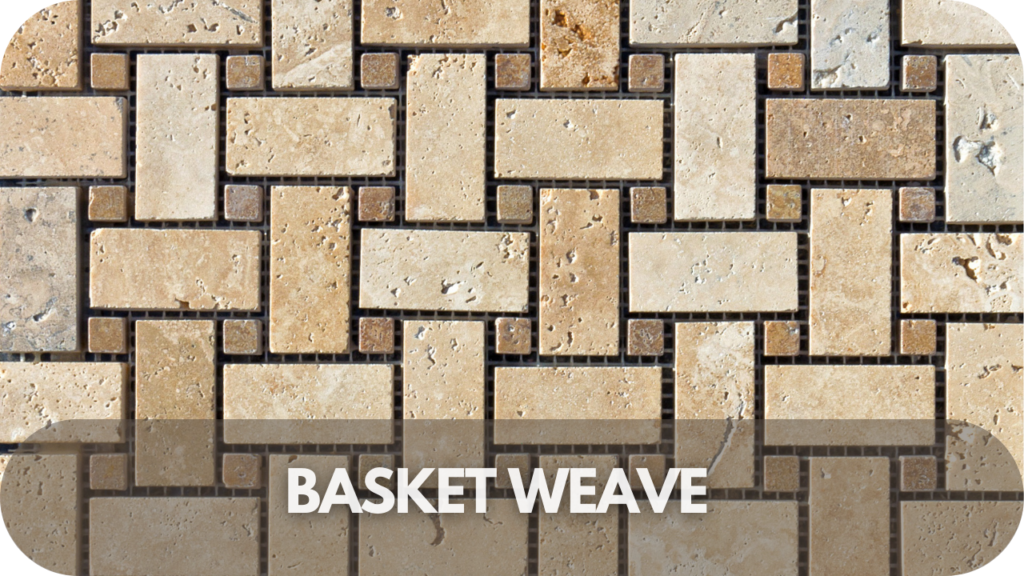
The basket weave pattern offers a classic and charming look for travertine walling. This design involves arranging rectangular tiles in pairs, with the pairs laid perpendicularly to one another, mimicking the interwoven appearance of a woven basket.
The pattern adds a sense of craftsmanship and detail, making it ideal for spaces that benefit from an intricate touch.
Basketweave works particularly well with travertine tiles in contrasting shades or finishes, as it highlights the structure of the pattern.
It’s a popular choice for smaller accent walls, as the compact design can make a space feel cosy and inviting. This layout is a nod to traditional design but remains timeless and adaptable to modern aesthetics.
5. Versailles (French Pattern)
The Versailles or French pattern is a sophisticated and elegant layout often associated with old-world charm. It combines tiles of various sizes to create an irregular yet harmonious arrangement. This pattern showcases the natural beauty of travertine while providing a unique and intricate appearance.
The interplay of large and small tiles creates a sense of flow and visual interest, making it perfect for larger wall surfaces.
Its versatility allows it to work well in both rustic and modern settings, adding warmth and character to any space. While the installation requires careful planning to fit the pieces together seamlessly, the result is a stunning and luxurious wall design.
6. Random Ashlar
Random ashlar is a timeless and versatile pattern that mimics the look of natural stone walls. This layout involves placing tiles of varying sizes in a seemingly random arrangement, though the placement is carefully planned to achieve balance and avoid monotony.
The pattern creates an organic, rustic look that highlights the natural textures and tones of travertine. It’s particularly effective in outdoor spaces, such as garden walls or facades, where it blends effortlessly with the surrounding environment.
Random ashlar’s irregularity adds depth and interest, making each installation unique. Proper craftsmanship is key to ensure a natural yet cohesive finish that will last for years.
Custom Patterns
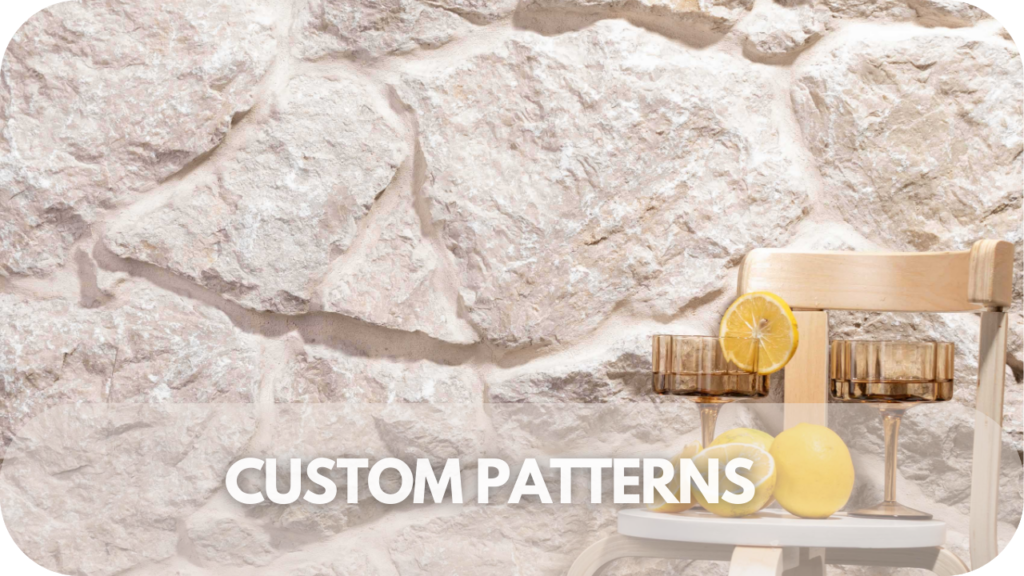
Custom patterns with travertine walling stones provide endless creative possibilities, allowing you to design a space that is uniquely yours. These bespoke designs can reflect your style and enhance the character of any area in your home.
By integrating travertine with materials like glass, metal, or wood, you can create striking contrasts or subtle blends that add a modern touch to traditional stonework.
For a more intricate look, use smaller pieces of travertine to create mosaic patterns, which offer detailed artwork on your walls, from abstract designs to specific images or motifs.
To add dynamic energy to your space, try using diagonal layouts instead of conventional horizontal or vertical patterns—this simple shift creates a fresh perspective and visual interest.
Additionally, inlay patterns incorporating different colours or textures can highlight specific areas, adding depth to your design. For a more contemporary feel, consider asymmetrical arrangements, mixing different tile sizes and shapes in non-uniform patterns for a stylish edge.
Finally, customising your patterns to match specific themes like Mediterranean, Moroccan, or Art Deco allows you to create a truly personalised space with complementary colours and finishes.
Choosing the Right Pattern for Your Space
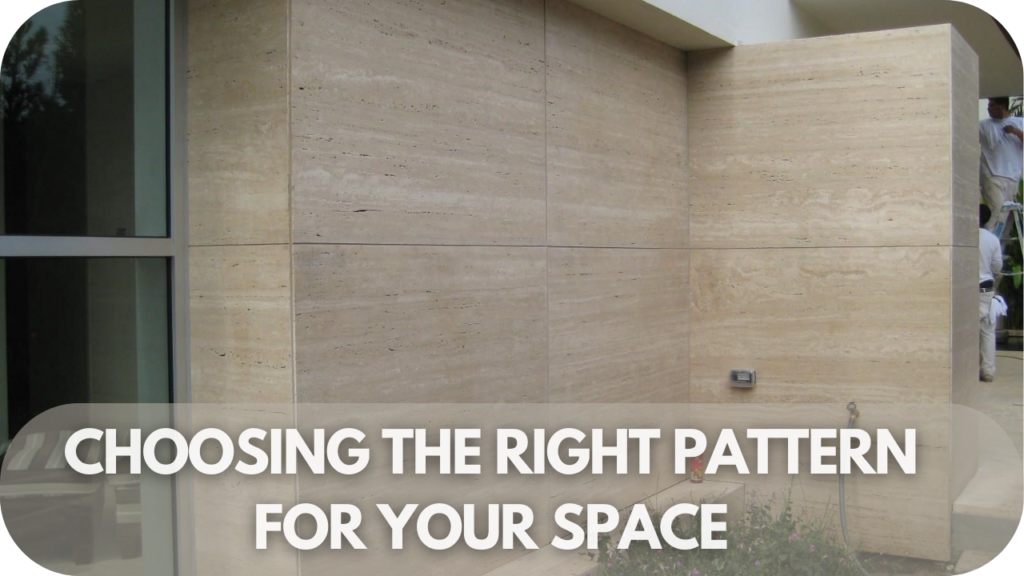
Selecting the right travertine walling stone pattern for your space involves considering various factors to ensure the design complements your overall aesthetic and functional needs.
- Space Size and Proportion: Larger spaces can handle bold patterns like herringbone or Versailles without feeling overwhelming, while smaller areas may benefit from simpler patterns like stacked bonds or running bonds to avoid visual clutter.
- Style and Theme: Your chosen pattern should align with the overall style of your home. For a contemporary look, consider sleek, modern patterns like diagonal layouts or asymmetrical designs. Traditional spaces might benefit from classic patterns like brick or basketweave.
- Colour Scheme: The pattern you choose should work harmoniously with the colour scheme of your space. Neutral patterns can blend seamlessly, while contrasting colours can make the pattern stand out as a focal point.
- Functionality: Consider the practical aspects of the pattern. High-traffic areas may require more durable and easy-to-clean patterns, while decorative areas can explore more intricate designs.
- Personal Preference: Ultimately, your taste plays a significant role. Choose a pattern that resonates with you and enhances your enjoyment of the space.
- Expert Advice: Consult with a professional to ensure your chosen pattern is feasible for your space and meets any specific structural requirements.
Installation Tips for Travertine Patterns
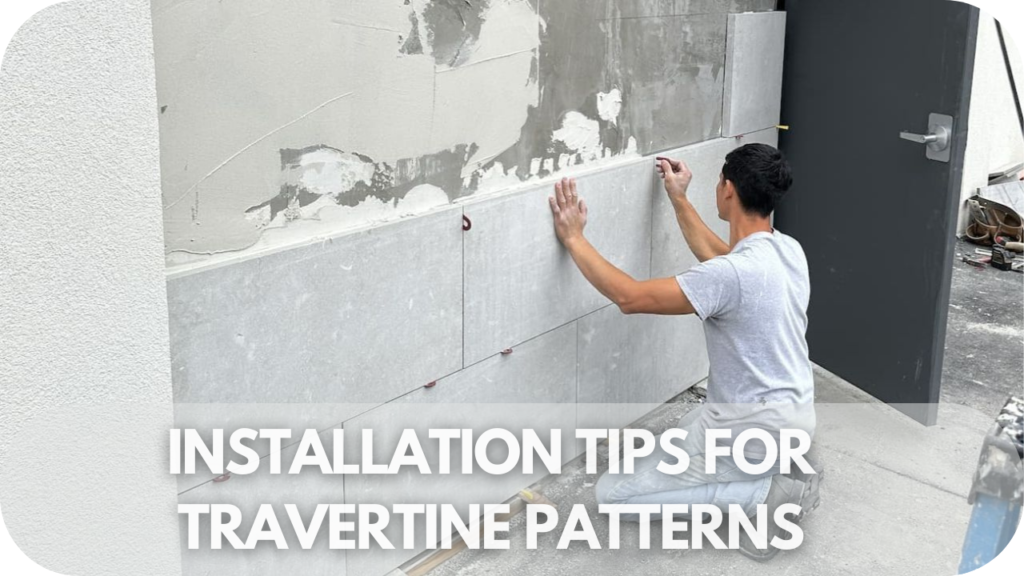
Installing travertine walling stones with intricate patterns requires precision and attention to detail. Here are essential tips to ensure a successful installation:
- Plan Your Layout: Before starting, carefully plan your layout. Measure the wall space and sketch your chosen pattern. This helps visualise the final look and ensures you have enough material. Dry lay the tiles on the ground to see how they fit together and make adjustments as needed.
- Prepare the Surface: Ensure the wall surface is clean, dry, and level. Remove any debris or old adhesive. For best results, apply a primer or bonding agent to enhance the adhesive’s grip on the wall.
- Use Quality Adhesive: Select a high-quality adhesive suitable for travertine and the specific wall type. Apply the adhesive evenly with a notched trowel, ensuring full coverage to prevent gaps and ensure strong adhesion.
- Start from the Bottom: Begin installing tiles from the bottom of the wall, working your way up. Use a level to keep the tiles straight, especially if you’re creating a pattern. Maintain consistent spacing between tiles with spacers to ensure uniform grout lines.
- Cutting Tiles: Use a wet saw with a diamond blade to cut travertine tiles to fit around edges and corners. Measure carefully and make precise cuts to maintain and care for the integrity of the pattern.
- Grouting and Sealing: After the adhesive sets, typically 24 hours, apply grout between the tiles. Choose a grout colour that complements your travertine. Once the grout is dry, seal the tiles to protect them from moisture and stains.
- Final Inspection: Inspect the installation for any uneven tiles or gaps. Make necessary adjustments before the adhesive fully cures.
Enhancing Patterns with Finishes and Textures
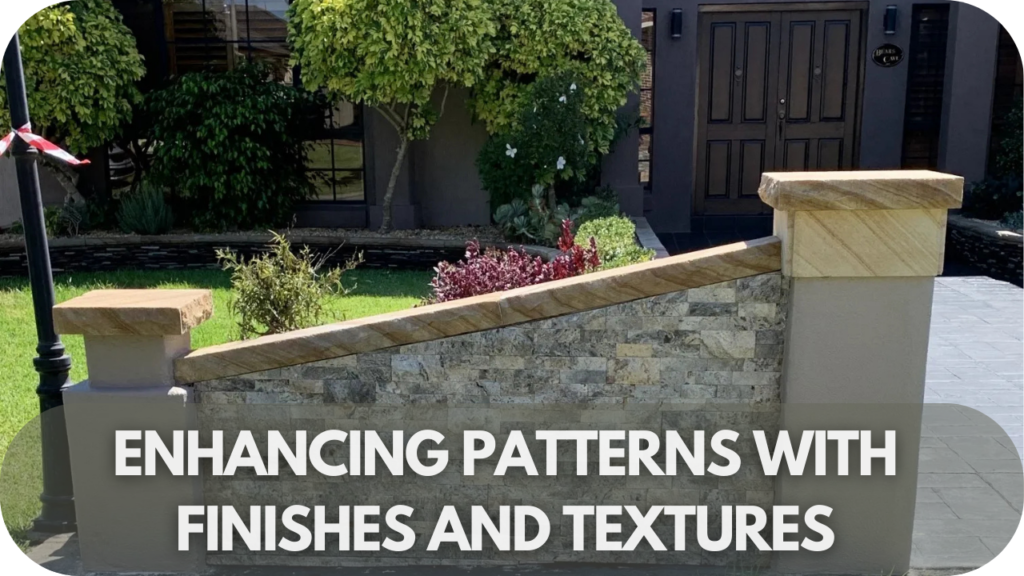
Enhancing travertine patterns with the right finishes and textures can significantly elevate the aesthetic appeal of your walling, making it a statement feature in any space.
A polished finish gives travertine a smooth, glossy surface that reflects light, adding a luxurious touch and highlighting intricate patterns. This finish is perfect for modern or high-end settings, where you want to draw attention to fine details.
The honed finish, on the other hand, provides a matte, smooth surface that is less reflective. It enhances the natural beauty of travertine and creates a softer, more subtle appearance, ideal for living rooms or bedrooms where a calm and elegant look is desired.
If you’re looking for a more rustic feel, a tumbled finish adds a weathered charm with rounded edges and a slightly rough texture, creating a vintage look perfect for traditional or rustic designs in kitchens or outdoor spaces.
A brushed finish gives the stone a slightly textured feel, highlighting natural veins and adding depth, which is ideal for timeless, classic looks in entryways or hallways.
Lastly, a chiselled edge provides a hand-crafted, rough look, adding rustic charm and texture, making it perfect for exterior walls or garden pathways.
Conclusion
Transforming your space with Travertine walling stones is all about creativity and choosing the right patterns. With the right design, you can elevate any room or outdoor area.
Ready to bring your vision to life? Visit Splendour in Stone for premium Travertine options and expert advice, and start creating stunning, lasting designs today!

